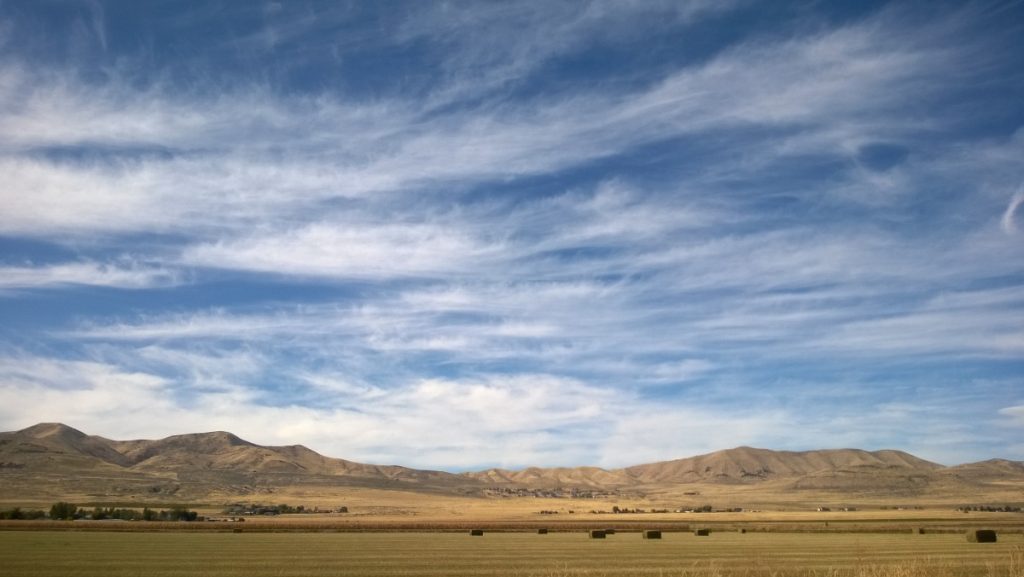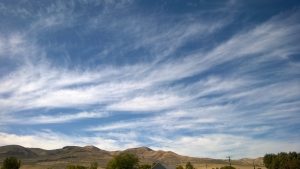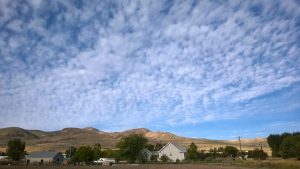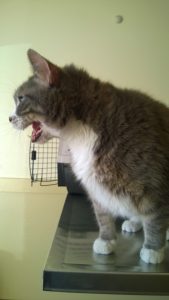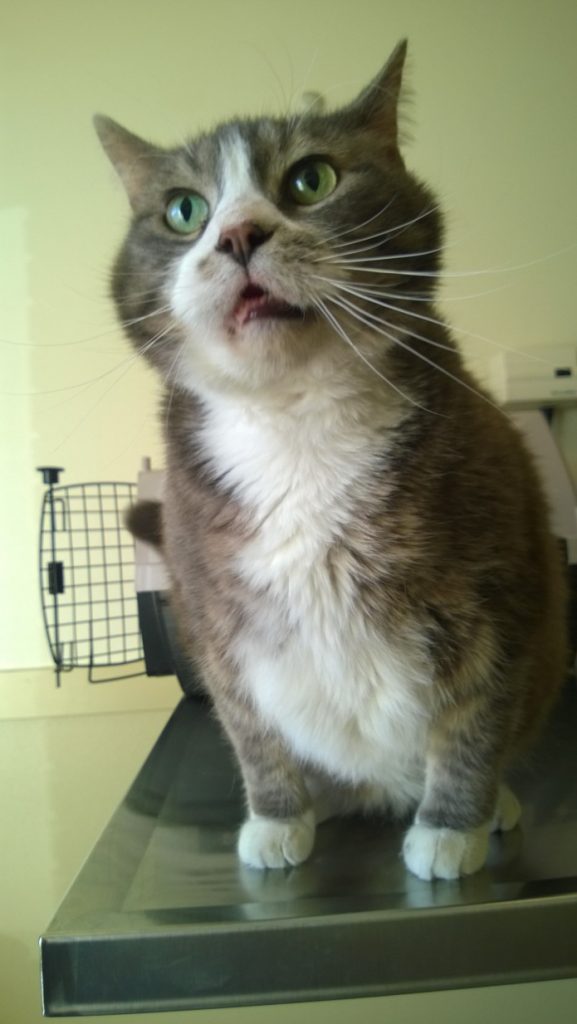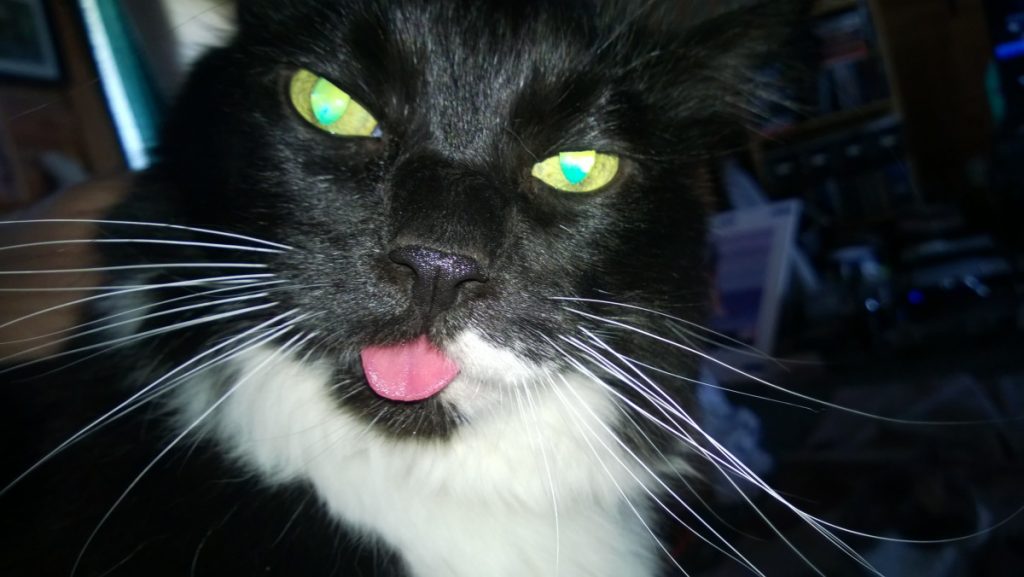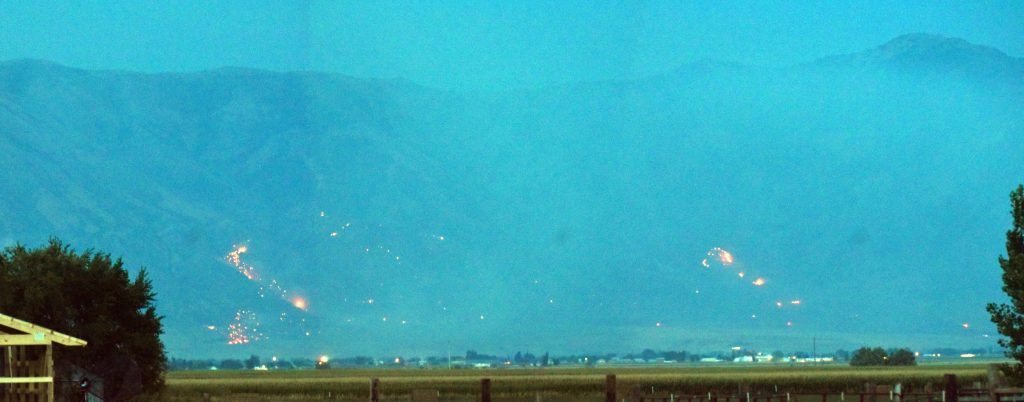Some recent Utah panoramas (vertical edition):
Sometime around the early 1990’s, the people who get excited about such things got excited about “donuts on a rope” contrails, which many assumed were the results of pulse detonation engines powering hypersonic Aurora spyplanes. Of course it turned out that these contrails, if you actually traced them to their sources, were being left behind perfectly normal jetliners cruising at substantially subsonic speeds. I see them, or something very much like them, on a regular basis. Anyone can who lives anywhere near the normal jetliner traffic lanes. I saw this one a few days ago:
Crappy photo taken with my cell phone, but it gets the idea across. The aircraft producing it was traveling at a normal rate of speed for a jetliner… as is always the case when I see these things.
So my question is: what *is* producing these regular puffs in the contrail? They look like they come on the rough order of magnitude of once per second.
Photo taken in Houston on August 30 showing a less-than-thrilled cat:
/https%3A%2F%2Fblueprint-api-production.s3.amazonaws.com%2Fuploads%2Fcard%2Fimage%2F581971%2F7e1add4d-ac5a-4996-a863-14129d767f66.jpg)
Hurricane Harvey cat is mad as hell and not going to take it anymore
As we all know, cats are generally unhappy about getting wet. But most cats tend to be pretty fair swimmers, so here’s hoping this little feller got where he wanted to get to.
Processed images from the Juno probe orbiting Jupiter. This Flickr account has some damn fine images at some damn fine resolution.



And then there’s this video composited from various images… with the ABSOLUTELY PERFECT music to go with it.
A little while ago I posted about some “2001” bluray screenshots and someone suggested that the movie needed to be redone with all-new visual effects; i argued that the only bits in the movie that could really benefit might be replacing the rather bland matte paintings of Earth. After seeing this, I can see how updating Jupiter could be *spectacular.*
So I crawled out of bed at 3 AM and wandered on up to Mackay, Idaho and parked myself next to the Mackay Reservoir, just a few miles from the centerline of the path of totality. The hour or so it took for the moon to crawl across the sun was interesting; but the actual period of totality was really quite remarkable. Perhaps most remarkable of all was that while it was getting perceptibly dimmer as more and more of the sun was covered up, the sunlight wasn’t really qualitatively different until that last tiniest sliver of sunlight was *gone.* If I’d been just a few dozen yards outside the path of totality, the experience would have been *wholly* different.
Unsurprisingly I took a bunch of photos. They are… ehhh. I think the best was actually taken with the old camera, showing both the foreground and the eclipsed sun in the sky. The sky really does go night-time dark; the sun itself is black (there being a moon in front of it) and the corona is obvious. The end result is that it looks like a friggen’ hole in the sky.
Below are some of the better photos. You can see some sunspots… and you can see that with the telephoto lens, I just can’t dial in a precise focus. I suspect it might be a bug in the lens.
This afternoon a “human caused” fire in the mountains blew up into an 800-acre wildfire. Somebody’s in a bit of trouble.
Photos taken from my place just after sundown began to unveil the fires, but were nevertheless unimpressive shots.
This dark blue unrevealing photo provides some more info with a little bit of “fade correction” added…
But more impressive photos were to be had by hopping in the car, driving closer and waiting for the sky to darken.
Photos after the break…

